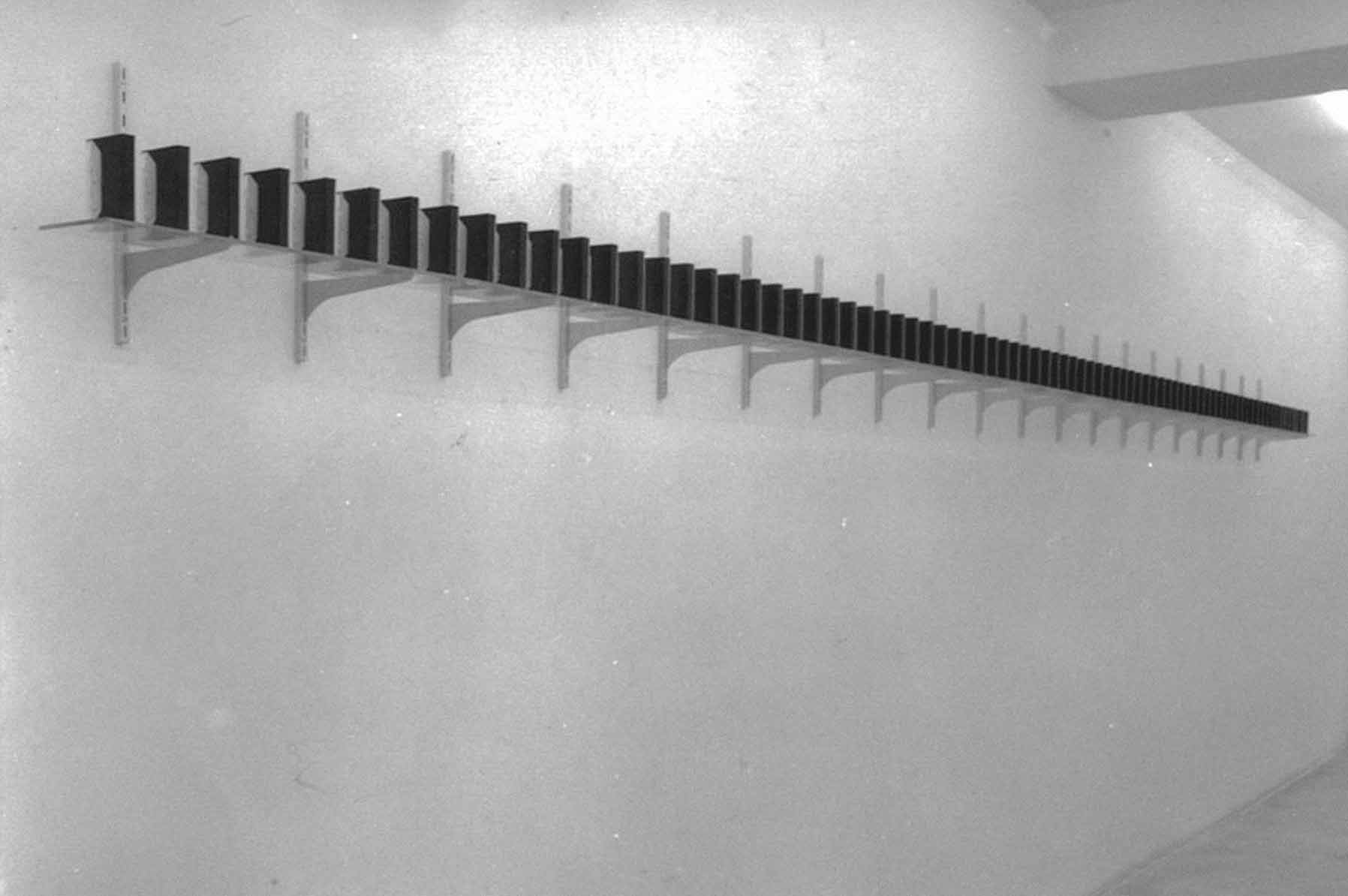Conceptual art in Britain
Tate Britain have a really good show on at the moment called Conceptual Art in Britain, 1964-1979. It’s the best graphic design exhibition I’ve seen.
I’m not trolling when I say that. Conceptual art was a movement about experimenting with the political and financial aspects of communication, manual and mechanical reproduction of communication and how it is interpreted. If you’re a graphic designer that’s basically what your job is.
Some of the work is obviously stunning, Art & Language’s ‘Dialectical Materialism’ being the obvious example, which is a huge proto-Experimental Jetset typographic mural. I would show a photo, but for some reason Tate have banned photography in the show so I can’t. Here’s a photo of an Experimental Jetset conference slide instead.

Some of the other work difficult to the point of being totally impenetrable, but that’s ok – it’s sort of the point – they were pushing communication to the limit of what could be communicated. And it’s all beautifully typeset.
There’s a brilliant piece in the show by David Tremlett called ‘The Spring Recordings’. For some reason Tate have banned photography in the show so the only decent photo I can find of it online is this one from 40 years ago.

Anyway, the wall text has a quote from Tremlett about the difference between audio recordings and audio loops. Because for some reason Tate have banned photography in the show I can’t quote it exactly, but he says something like “looping sound or film breaks it out of being linearly narrative, and allows it become an aesthetic form like a drawing or a sculpture”. Which is really nice, and I went off and spent a couple of hours thinking about GIFs and techno and cool internet things like this collaboration between Arca, Jesse Kanda and Shayne Oliver.
If you want to chat more about stuff like this, send me an email or get in touch on Twitter.
You can pretend it's 2005 and subscribe to my RSS feed